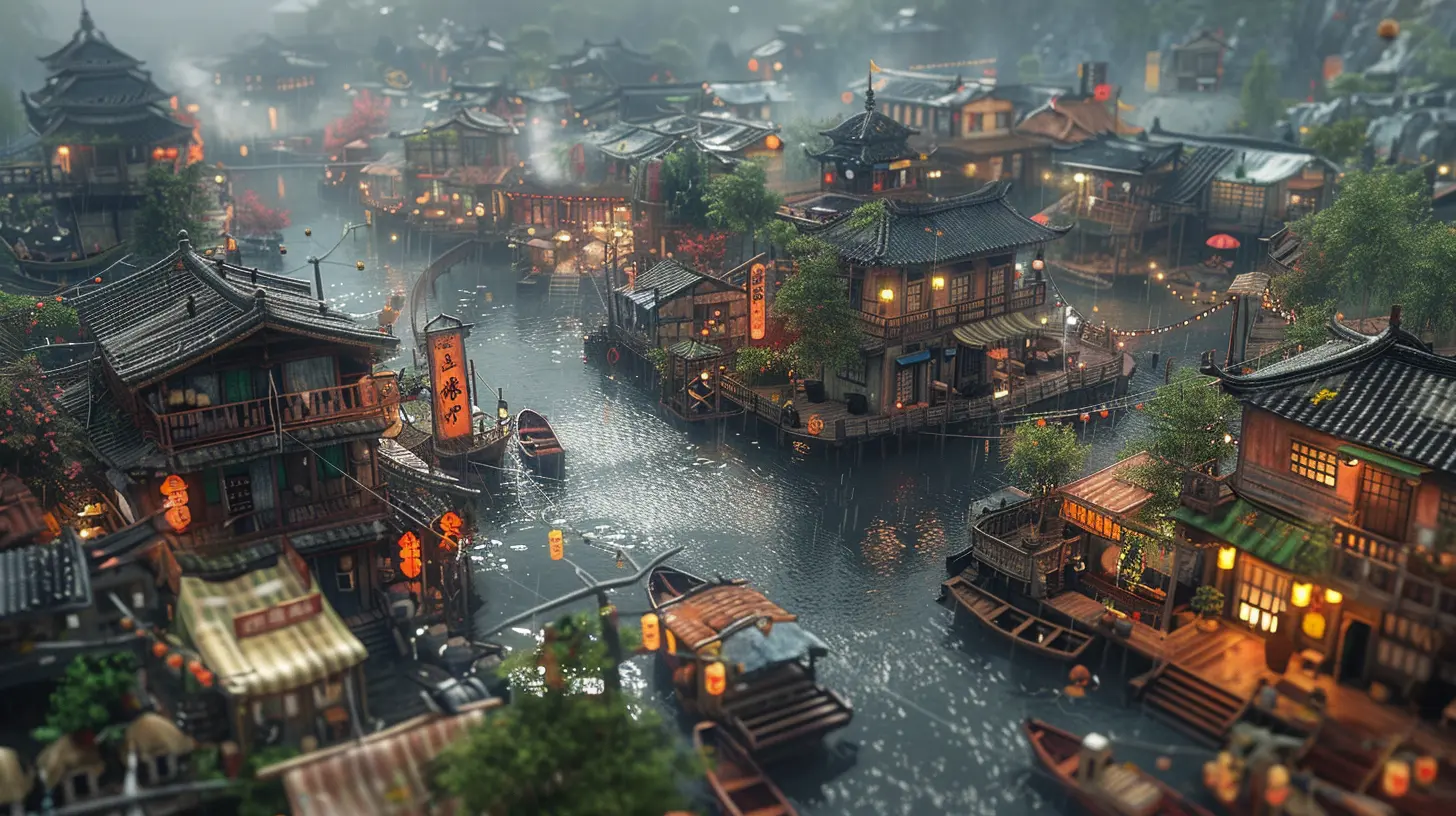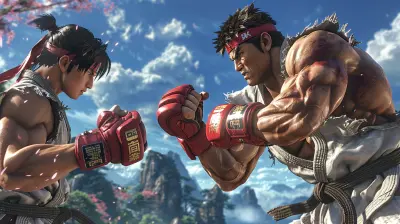Designing Sustainable In-Game Economic Loops
5 November 2025
Let’s be real: if you’ve ever cracked open a digital chest for coins or sold 37 goblin ears for gold, you’ve been a tiny gear in a grand system—an in-game economy. And just like in the real world, if that economy gets out of whack, well… things go sideways fast.
So how do developers make sure these virtual economies don’t implode, inflate like crazy, or leave players rage-quitting because the only thing they can afford is a rusty spoon? Say hello to the magic (and madness) of sustainable in-game economic loops.

What the Heck Is an In-Game Economic Loop?
Picture this: you chop wood, sell it, earn gold, use gold to buy a better axe, chop more wood, and the wheel keeps turning. That's an economic loop.In its simplest form, it's a cycle of earning, spending, and reinvesting resources—whether it's gold, loot, or in-game currency. But making that loop sustainable? Whew, that’s where things get juicy.

Why Should You Care About Sustainability?
Let’s throw it at you straight—unsustainable economies crash. And guess who suffers the most? Players. Yep, that’s you and me.Ever played a game where everyone’s a billionaire and nothing has value anymore? Or one where prices are so high you need to grind for 40 hours just to buy a stick? Not fun.
A sustainable game economy means:
- Long-term player engagement
- Fair item values
- Rewarding progression
- Less burnout
- More smiles per login
And for devs? It means more players stick around, spend organically, and don’t wreck the feedback forums with pitchforks and caps lock.

The Pillars of a Sustainable In-Game Economy
Alright, let’s geek out a little. Building a lasting economic system needs more than just loot tables and shopkeepers. It takes strategy.Here are the big building blocks:
1. Balanced Resource Generation and Sinks
If gold pours into the game like a chocolate fountain but there's nowhere good to spend it, your economy’s gonna bloat. Fast.You need a balance:
- Resource Sources: Quests, crafting, farming, trading
- Resource Sinks: Repairs, taxes, high-end gear, consumables
Think of it like plumbing: if you turn on all the taps and forget the drains, you're flooding the metaphorical basement.
2. Controlled Inflation
You know that MMO where bread costs 10,000 coins now? Classic inflation.Sure, some inflation is natural as players progress and earn more... but let it run wild, and new players get destroyed. Veterans hoard wealth, newbies struggle, and the economic gap grows wider than the Grand Canyon.
How to mitigate it?
- Scale rewards logically
- Cap certain resource farming methods
- Introduce time-based or seasonal resets
3. Player-Driven Economies (With Limits)
Letting players set prices and trade freely adds flavor and realism. It’s how you get those cool stories of one guy cornering the in-game fish market.But total freedom = total chaos. Your economy can become the Wild West real quick.
Smart devs implement:
- Max/min price brackets
- Marketplace taxes
- NPC price floors/ceilings
Basically, let the players dance... just not off the cliff.
4. Meaningful Progression
Sustainable loops must reward players in a way that feels good, not grindy. Nobody wants to feel like they're on a hamster wheel made of RNG and disappointment.Ensure:
- Milestones feel achievable
- High-end goals are worth the effort
- Progression ties into economic systems
That way, even if it takes 100 hours to earn Excalibur, it feels like a journey—not a chore.

Common Pitfalls That Kick Your Economy in the Teeth
Let’s throw some shade. These are the biggest “oopsies” that wreck in-game economies faster than a patch gone wrong.Overgenerous Loot Drops
Sure, raining loot feels fun at first. But make it too easy, and nothing’s valuable anymore. Scarcity = value. Always.Lack of Currency Sinks
If nothing eats away at your coins, the economy becomes a coin-generating machine. And that’s bad news bear territory.Zero Failure Mechanics
When crafting always succeeds, or weapons never break, players stockpile goodies until they drown in them. Add some risk and keep that supply in check.Unregulated Trading/Alt Farming
Ah yes, the classic "my cousin gave me 5,000 gold from his second account." Alt-farming can break your economy unless it’s tightly controlled. Limit trade frequency, add cooldowns, or require progression before major trades.Real-World Examples: What Games Got It Right?
We’re not just theorycrafting here. Some games actually nailed their economic loops (or at least got really close).Old School RuneScape
RuneScape’s economy is entirely player-driven. The Grand Exchange acts like Wall Street for potions and armor. High demand drives up prices. Random world events shift markets. It’s real, reactive, and brilliant.Animal Crossing: New Horizons
Okay, yes, you’re trading turnips with tiny raccoons. But the “Stalk Market” is a prime example of a controlled economy that ties into daily gameplay. It’s goofy. It’s addictive. And it works.EVE Online
This beast has a spreadsheet for breakfast. EVE’s economy literally mimics real-world supply chains. Players manufacture, transport, trade, and run economies like CEOs in space. It's hardcore—but also a masterclass in economic design.
Quirky Ideas That Could Spice Up Your Economic Loops
It’s not all spreadsheets and balance sheets. You can add flavor and creativity while still keeping the system airtight.🎭 Faction Taxes
Imagine each faction in your game sets different tax rates. Players have to choose who to align with—high taxes and cool perks, or low taxes but fewer benefits? That's strategy and spice.⏳ Time-Limited Currencies
Drop seasonal currencies that vanish after events. Force spending, prevent hoarding, and reinvent the loop periodically. Pumpkin Coins in October? Yes, please.🌱 Resource Decay
Got 100 potions? Oops, they rot after 7 days unless refrigerated. Boom—instant currency sink and realism bonus.🔄 Crafting With a Twist
Let players recycle old gear into new items. That keeps inventories clean and resources in circulation. Nothing dies—everything becomes something else.📉 Dynamic Pricing
What if in-game prices changed daily based on how many players are farming that item? Now your economy's alive, breathing, and super unpredictable (in the best way).How to Test and Maintain In-Game Economies
Designing the loop is only the start. You’ve got to keep tabs on it like a hawk with an Excel hobby.Use Analytics
Track everything: average gold income per player, most traded items, price trends. If something starts looking too lucrative or too painful, dive in and tweak.Listen to Your Community
Players are economy detectives. They will find the loopholes, the exploits, the “infinite gold generator” bugs. And they will shout it from the rooftops. Listen. Adjust. Thank them (maybe with a cool in-game hat).Regular Updates & Seasonal Resets
Rotate in new events, limited-time vendors, even currency wipes (carefully!) to keep things fresh and balanced.Maintaining a healthy economy is just like caring for a Tamagotchi—ignore it for a week, and you’re cleaning up a mess.
So, What’s the Big Takeaway?
At the end of the day, designing sustainable in-game economic loops is part science, part art, and part voodoo magic. It’s about building a virtual world where actions have meaning, resources have value, and progression feels rewarding.You want to keep players hooked—not because they’re endlessly grinding for invisible rewards, but because every action feeds back into a system that feels alive, fair, and—most importantly—fun.
So the next time you're coding the 57th treasure chest drop or adjusting the vendor prices on mystical herbs, just remember: balance is everything. And maybe throw in some goofy seasonal currency while you’re at it.
all images in this post were generated using AI tools
Category:
In Game EconomyAuthor:

Jack McKinstry
Discussion
rate this article
1 comments
Abram Sanders
In realms where pixels dance with care, Sustainable loops weave dreams so rare. Balance, nature, and play entwined, A future where joy and earth aligned. Craft the game, nurture the soul, In harmony, let our worlds be whole.
November 5, 2025 at 4:12 PM

Jack McKinstry
Thank you for your poetic reflection! It beautifully encapsulates the essence of merging sustainability with gaming, highlighting the harmony we strive for in our economic designs.


